Smile makeover and the oral facial harmony concept in a new era
Smile makeover and the oral facial harmony concept in a new era: relationship between tooth shape and face configuration
Abstract
The patient’s facial characteristics play an essential role in achieving a customized smile restoration with appropriate individualized tooth shapes. By initially studying the patient’s face, an approach can be determined to plan new individual tooth shapes to achieve a satisfactory outcome. The dental esthetic rehabilitation taking the facial proportion into account involves a complex planning process. To successfully realize such a project, several factors must be evaluated when designing the restoration, including dental alignment, crown dimension, color, occlusion, and facial proportions. Understanding all the anatomical parameters is essential to creating a harmonious esthetic restoration.
(Int J Esthet Dent 2021;16:2–8)
Introduction
The facial type of a patient is not only defined by facial symmetry, asymmetry or anthropology but also by an awareness of things through the physical senses (perception); the way things seem, look or feel (impression); and the perceiver’s personal interpretation of esthetic excellence and attractiveness (beauty). Other aspects of the face that can be defined for the purposes of the restoration project include strong, dynamic, delicate, and calm. 1,2 Nowadays, many patients seek a more attractive appearance. There are several techniques available to perform esthetically pleasing restorations. Ongoing research is being conducted in this area, for instance, the concept known as oral facial harmony.3,4 Dentists have been conducting orofacial analyses for decades, a process that involves applying mathematical rules and geometry principles to create parallel or perpendicular lines on a patient’s face. The aim is to achieve harmony rather than symmetry in the redefinition of the smile, because people’s faces are naturally asymmetric. The idea, then, is to create a balanced harmonious smile in relation to the patient’s face, which is more important than trying to create a mathematically perfect symmetrical smile. 5
Patients sometimes further request a new design of the face (beautification concept), which is performed with facial harmony procedures using hyaluronic acid and botulinum toxin (Botox). 6 The new face configuration is then analyzed as a guide to realize the future individual tooth shapes for the customized patient smile.
The patient cases presented in this article report on a system that gives dental professionals specific skills and tools to go beyond the usual standard of creativity in esthetic oral rehabilitation.
Technical approach
The restoration of esthetics in the prosthetic treatment of patients is an aspect of dentistry where computer technologies are becoming more widely used to achieve the desired outcomes. 7-9 Today, good-quality dental software programs are available on the market that offer systems of smile design assessment according to the overall facial context of the patient. All smile design concepts and systems require a facial photograph of the patient, smiling naturally. The expression on the patient’s face forms the first impression and has a high social value. 1,10,11 The facial contour assumes an important role, especially for the definition of the future maxillary central incisors12-16 (Figs 1 to 3).
Case report 1
A young female patient presented who had been treated with veneers 18 months previously. She was unhappy with the result, particularly concerning the shape and color of the veneers. She was also dissatisfied with the design of the restoration, which she felt was inappropriate in the context of her face. Furthermore, the veneers presented some cracks on the facial surface and showed cervical imprecisions (Fig 4).
The treatment plan began with a digital examination of the bitemporal, bizygomatic, and bigognatic areas of the patient’s face, drawing the hypothetical anatomical configuration of the tooth on top of the face surface. This configuration is mainly related to the aspect of the two maxillary central incisors.17
Facial analysis was then performed without the use of mathematical rules and geometric principles. The primary objective was not to create a mathematically perfect smile with no dynamic effects. A further and related objective was to avoid giving all the teeth exactly the same incisal level, which would result in a flat anatomy. In this author’s opinion, an esthetic rehabilitation must show a dynamic harmony between the asymmetric facial details and the final individual tooth anatomy. A human face has asymmetric areas; furthermore, natural teeth are not anatomically identical and symmetric in their position, facial transition lines, and incisal margin aspects (Fig 5).
Based on the anatomical concepts and facial details, a new classification system of tooth form known as Dental Anatomical Combinations was taken into consideration to create the technical approach in the laboratory.18 This concept aims to help dental professionals to produce different tooth anatomies that extend beyond the standard tooth shapes. The basic principle of the concept is the segmentation and recombination of two or even all three of the basic tooth forms.
First, the perimeter of each tooth form is sectioned into smaller segments. By sectioning the tooth into three different segments, a mesial, distal, and incisal segment is obtained. If necessary, these three segments can be further divided, resulting in six half-segments: mesial cervical, mesial body, mesial incisal, distal cervical, distal body, and distal incisal19 (Fig 6).
After this initial digital and technical approach, the mock-up was performed in the clinician’s office. Then, final feldspathic veneers were created and cemented in the patient’s mouth.
The customized smile shows the dynamic appearance of the redefined smile. The individual tooth anatomy has a new anatomical configuration. Due to the patient’s Asian ethnicity, the facial transition lines of the two maxillary central incisors were performed with a larger volume, characteristic of the tooth appearance of Asian people (Figs 7 and 8).
Case report 2
A 27-year-old male patient was concerned about the esthetics of his facial contour as well as his teeth and smile. The shape of his face was clinically analyzed as having a narrow configuration of the chin and jaw. His teeth had a yellow-orange color, similar to shade A3.5, and the presence of a diastema presented an additional esthetic challenge. The patient’s expectation was to improve the esthetics of both his dental and facial appearance.
The clinical plan was to manufacture four veneers for teeth 12, 11, 21, and 22, and two fragments for teeth 13 and 23 to reduce the large embrasures. Direct composite resin has been suggested as a way to conservatively improve the buccal corridor, and this method was considered in this case to facially increment teeth 14 and 24. A study of the patient’s facial proportions was executed, 20 and a lack of jaw and chin support was noted. The clinical evaluation was to make derma filler using hyaluronic acid at the jaw angle to alter the natural shape of the face to a square facial standard with minimum intervention, which is what the patient wanted.
The dental technician then digitally analyzed the transformed facial shape to create a suitable design for the future veneers based on the new facial details. 21 This facial analysis is an appropriate technique to digitally plan an individual tooth design after face modifications through derma filler treatment.
On analyzing the initial image, it was found that the natural angle between the zygomatic and mandibular branch was 15 degrees; after the oral facial harmony analysis, the newly created angle was 9 degrees (Fig 9). It has been shown in the literature that the masculine facial standard with a highlighted mandibular angle is representative of attractiveness, and the global facial standard has become a squarer-shaped face for this gender.
After this facial transformation, the technician measured the distance of the bitemporal, bizygomatic, and bigognatic areas, drawing facial reference lines (Fig 10).
In the next step, the practical part of the treatment began with the diagnostic waxups. The dental technician used a specific technique to create the individual teeth, especially the two maxillary central incisors. This technique works with the mesial, distal, and incisal fragments joined together, and produces a variation of the Dental Anatomical Combinations concept. The laboratory made specific silicone and thermoplastic tools (keys) for use by the clinician to create a clinically calibrated preparation for the future veneers (Figs 11 and 12).
After the definition of the new squarer facial standard, the oral test drive of the smile was performed following the new tooth configuration. The patient was photographed and filmed to demonstrate the modifications. After he approved the new smile design based on the facial harmony concept, the calibrated minimally invasive preparation was performed using the sectioned silicone keys.
A calibrated preparation is recommended to avoid an aggressive tooth reduction. The incisal space should be at least around 2 mm with a butt margin design. 21 To better preserve the unit, the butt margin should be prepared from the incisal-lingual to the incisal-facial aspect, with a 45-degree inclination. In the incisal-lingual area, 1 mm of reduction is sufficient. With this procedure, the clinician can maintain more tooth structure, especially in the incisal-lingual area. With this incisal design, the technician can layer the ceramic effects on the incisal third of the tooth (Fig 13).
The calibrated preparation was performed using the sectioned silicone keys, which helps the clinician to better evaluate all the suitable spaces for the future veneers (Fig 14).
The stratification of the ceramic involved a sophisticated multilayer technique using a variety of ceramic masses to simulate the natural contrast effects inside the tooth.22 In the incisal area, the double incisal wall technique was applied, brushing ceramic masses with different degrees of opacity, translucency, opalescence, and fluorescence effects. Modifiers and stains were added in the incisal area to reproduce a natural appearance. Both the facial and incisal lingual areas were treated with the same layering technique (Figs 15 and 16).
After the layering technique, the final texture was evaluated, and the different lines were made onto the entire facial surface of the veneers using several burs. At this point, the veneers were ready to be glazed and manually polished. The final shape of the veneers respected the new transition lines of the face configuration that had changed due to the derma filler treatment.
The veneers were tested in the patient’s mouth for the final try-in and then cemented. The patient was satisfied with his new customized smile design, which met his expectations. The new smile was based on the realization of the personalized tooth shapes in accordance with the oral facial harmony concept and appropriate treatment (Figs 17 to 23).
Discussion
Digital technology is widely used nowadays for facial recognition through face detection from photographs as well as through the analysis of facial contours. The continual development of technology and the increasing availability of information in the field of esthetic dentistry have led to increased patient demand, which, in turn, has prompted dental professionals to question certain aspects of customization. The area of esthetic odontology has also been expanding according to this patient demand. Dental professionals today have the possibility of evaluating a patient’s facial proportion and function in terms of both sophisticated facial esthetics and customized smile redefinition. 23,24
In this article, Dental Anatomical Combinations was described, a classification system that makes use of a segmentation technique to create new tooth forms. This, together with the oral facial harmony concept, aims to allow dental professionals to produce different tooth anatomies that extend beyond the standard tooth shapes.
The second patient case described herein showed how, after derma filler treatment, the dental technician was able to plan digitally and then manually the new anatomical configuration of the patient’s maxillary central incisors. For this step, excellent communication is essential among the patient, clinician, and dental technician.
There has been much discussion in the dental field regarding exactly what constitutes a minimally invasive preparation. A calibrated preparation that precisely grinds the teeth using sectioned silicone keys to avoid unnecessary hard tissue reduction is an excellent way to treat a patient safely and naturally. The attainment of beauty is not the creation of transformation in the patient but rather the creation of a natural harmony of the smile in the context of the face.
Conclusion
The main purpose of esthetic dental treatment is to achieve a beautiful smile. One of the most significant challenges for the clinician and dental technician is to recreate the beauty of the smile with natural-looking teeth. There are different points of view concerning esthetic parameters. Dental Anatomical Combinations, supported by a customized smile makeover in combination with analog and digital procedures, is a constructive way to ensure harmonious unity between the patient’s facial type and the teeth. Digital facial maps provide reliable and fast identification of the facial type while smiling.
This study of the customized tooth based on facial configuration enabled the creation of a digital design for a precise and esthetic prosthetic restoration of the anterior teeth. To obtain an optimal outcome, it is necessary for the dental professionals involved to interpret exactly how the new customized smile is in harmony with the patient’s face. The esthetic oral rehabilitation and facial contouring described in this article is focused on patient need, with an esthetic treatment selected according to the patient’s facial shape. In order to perform the ultimate smile makeover in this new era of Dental Anatomical Combinations, based on facial configuration and taking into account oral facial harmony, excellent communication between the clinician and dental technician is essential as well as a high standard of work and strict protocols.
Acknowledgments
The author is thankful for the intense clinical cooperation and high level of performance of Drs Sillas Durate, Pascal Magne, and Jin-Ho Park of the University of Southern California, Los Angeles, USA, as well as Dr Carolina Brito, Goiânia, Brazil.
References
1. Rhodes G. The evolutionary psychology of facial beauty. Annu Rev Psychol 2006;57:199–226.
2. Gürel G, Paolluci B, Iliev G, et al. The art and creation of a personalized smile: Visual Identity of a Smile (VIS). Quintessence Dent Technol 2019,42:31–48.
3. Borelli C, Berneburg M. ‘‘Beauty lies in the eye of the beholder’’? Aspects of beauty and attractiveness. J Dtsch Dermatol Ges 2010;8:326–330.
4. Bashour M. History and current concepts in the analysis of facial attractiveness. Plast Reconstr Surg 2006;118:741–756.
5. Pereira Silva B, Mahn E, Stanley K, Coachman C. The facial flow concept: an organic orofacial analysis – the vertical component. J Prosthet Dent 2019;121:189–194.
6. Altamiro F. Dermal Fillers for Facial Harmony. Chicago: Quintessence, 2019
7. McCrae R, Costa PT Jnr. A contemplated revision of the NEO Five-Factor Inventory. Personality and Individual Differences 2004;36:587–596.
8. McLaren EA, Culp L. Smile analysis – The Photoshop smile design technique: Part I. J Cosmet Dent 2013;29:94–108.
9. Zimmermann M, Mehl A. Virtual smile design systems: a current review. Int J Comput Dent 2015;18:303–317.
10. Wolffhechel K, Fagertun J, Jacobsen UP, et al. Interpretation of appearance: the effect of facial features on first impressions and personality. PloS One 2014;9:e107721. doi:10.1371/journal.pone.0107721.
11. Davis LG, Ashworth PD, Springs LS. Psychological effects of aesthetic dental treatment. J Dent 1998;26:547–554.
12. Gizatdidinova Y, Surakka V. Automatic localization of facial landmarks from expressive images of high complexity. Department of Computer Sciences, FIN-33014, University of Tampere, 2008.
13. Gupta S, Markey MK, Bovik AC. Anthropometric 3D face recognition. Int J Comput Vis 2010;90:331–349.
14. Ibrahimagić-Šeper L, Celebić A, Petricevic N, Selimović E. Anthropometric differences between males and females in face dimensions and dimensions of central maxillary incisors. Medicinski glasnik 2006;3:58–62.
15. Yankov B, Iliev G, Filtchev D, et al. Software Application for Smile Design Automation Using the Visagism Theory. Proceedings of the 17th International Conference on Computer Systems and Technologies, CompSysTech’16, June 23–24, Palermo, Italy. ACM International Conference Proceeding Series, vol 1164. New York: ACM Inc, 2016:237–244.
16. Shi J, Samal A, Marx D. How effective are landmarks and their geometry for face recognition? Computer Vision and Image Understanding 2006;102: 117–133.
17. Rufenacht CR. Fundamentals of Esthetics. Chicago: Quintessence, 1990.
18. Phark JH, Romeo G. Dental anatomical combinations: a guide to ultimate dental esthetics. Quintessence Dent Technol 2013;36:183–204.
19. Kataoka S, Nishimura Y, Sadan A. Nature’s Morphology: An atlas of tooth shape and form. Chicago: Quintessence, 2002.
20. Farolch-Prats L, Nome-Chamorro C. Facial contouring by using dermal fillers and Botulinum Toxin A: a practical approach. Aesthetic Plast Surg 2019;43:793–802.
21. Magne P, Belser U. Bonded Porcelain Restorations in the Anterior Dentition. A Biomimetic Approach. Berlin: Quintessence, 2002:293–321
22. Romeo G. Multilayer ceramic layering: systematic approach technique for the ceramic build up between the facial and the lingual area. Smile Dental J 2017;12:10–16.
23. Farolch-Prats L, Nome-Chamorro C. Facial contouring by using dermal fillers and Botulinum Toxin A: a practical approach. Aesth Plast Surg 2019;43:793–802.
24. Harrar H, Myers S, Ghanem AM. Art or Science? An evidence-based approach to human facial beauty. A quantitative analysis towards an informed clinical aesthetic practice. Aesthetic Plast Surg 2018;42:137–146.
Dear customers! We would like to remind you that from 31 December to 3 January sales will be suspended due to the New Year holidays. Please place your orders in advance to avoid possible delays. We wish you a Happy New Year!
Close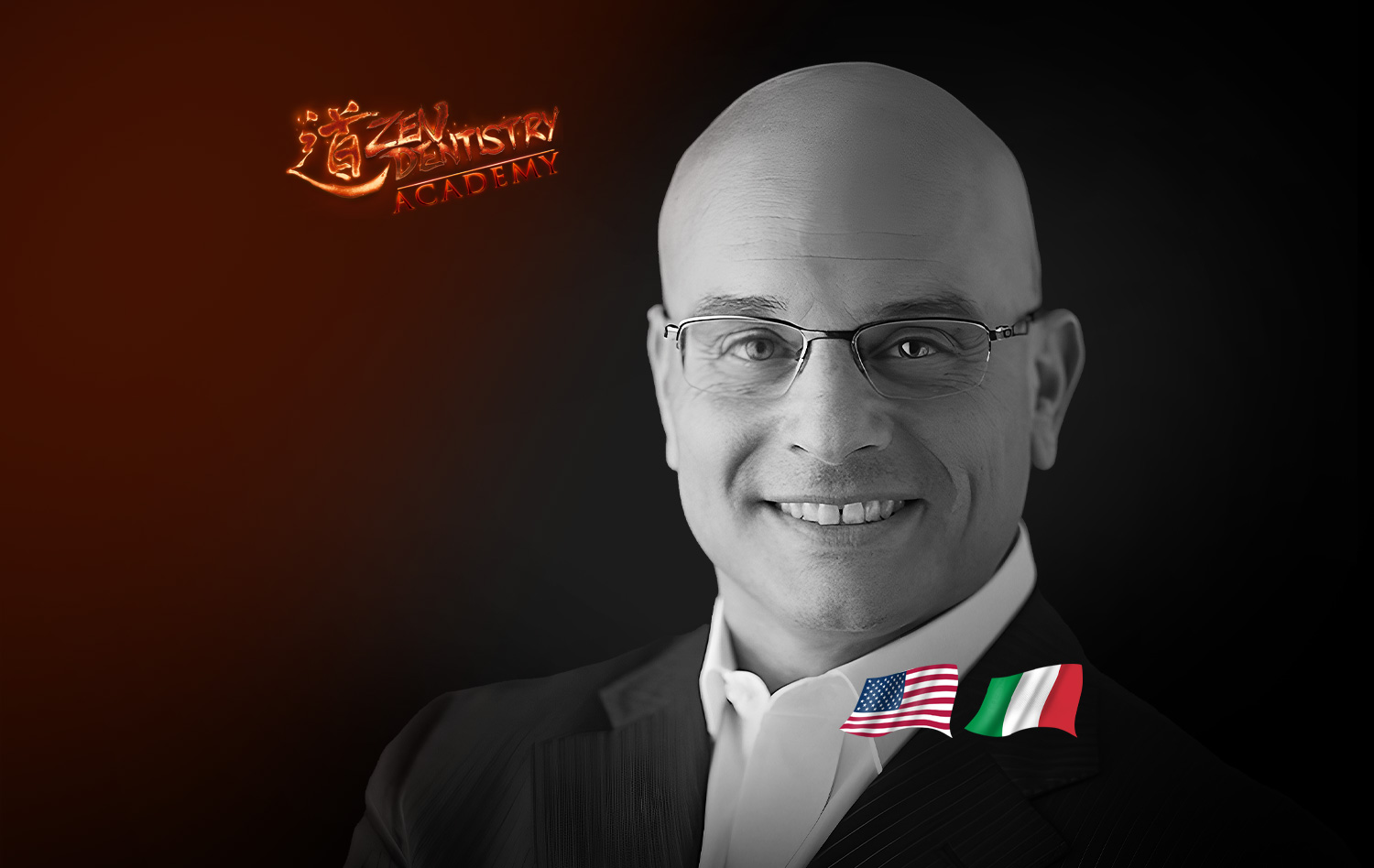
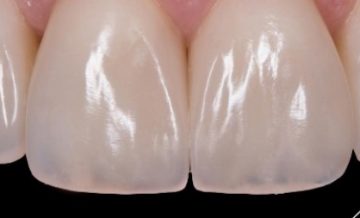
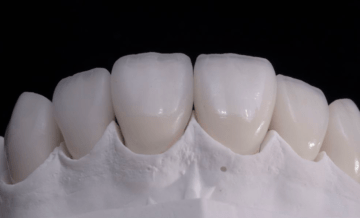
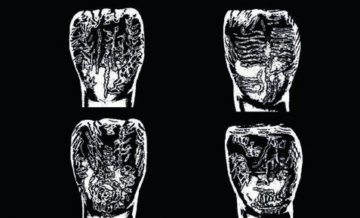
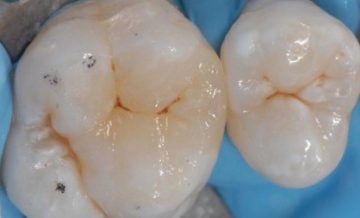
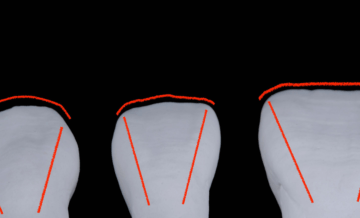





Комментарии могут оставлять только зарегистрированные пользователи.
Регистрация